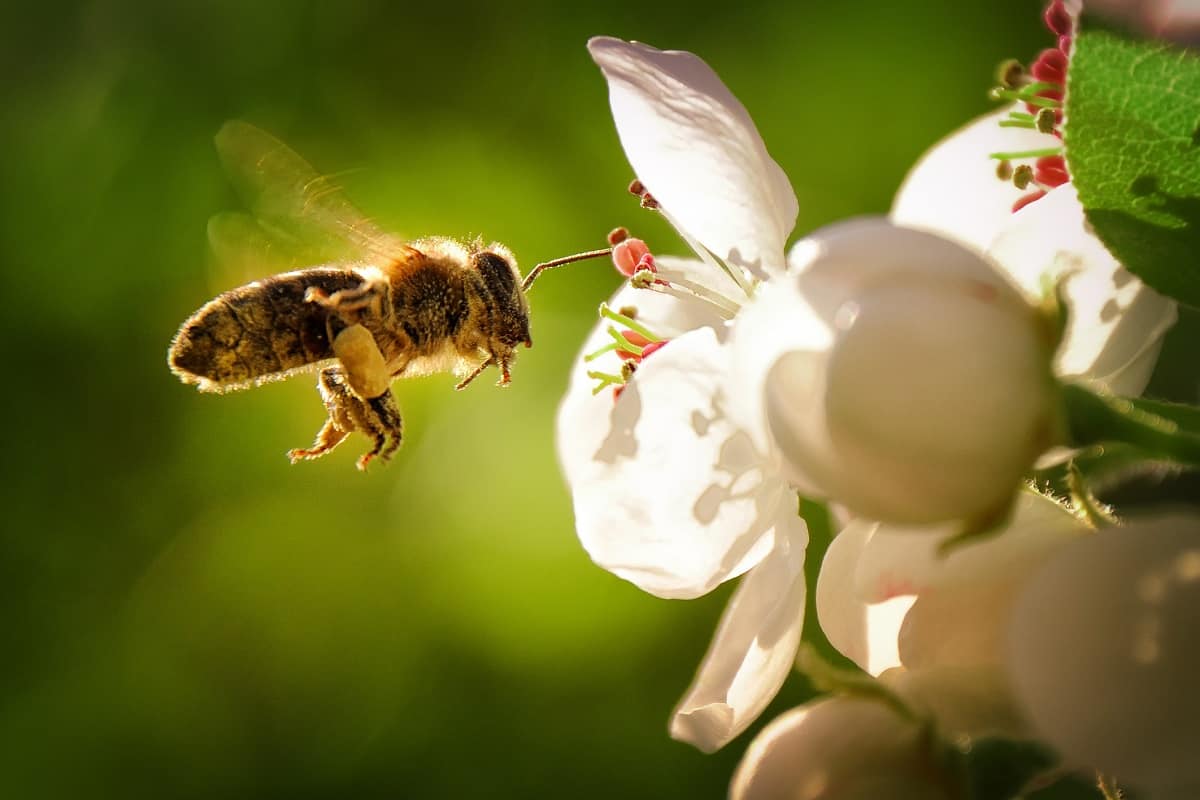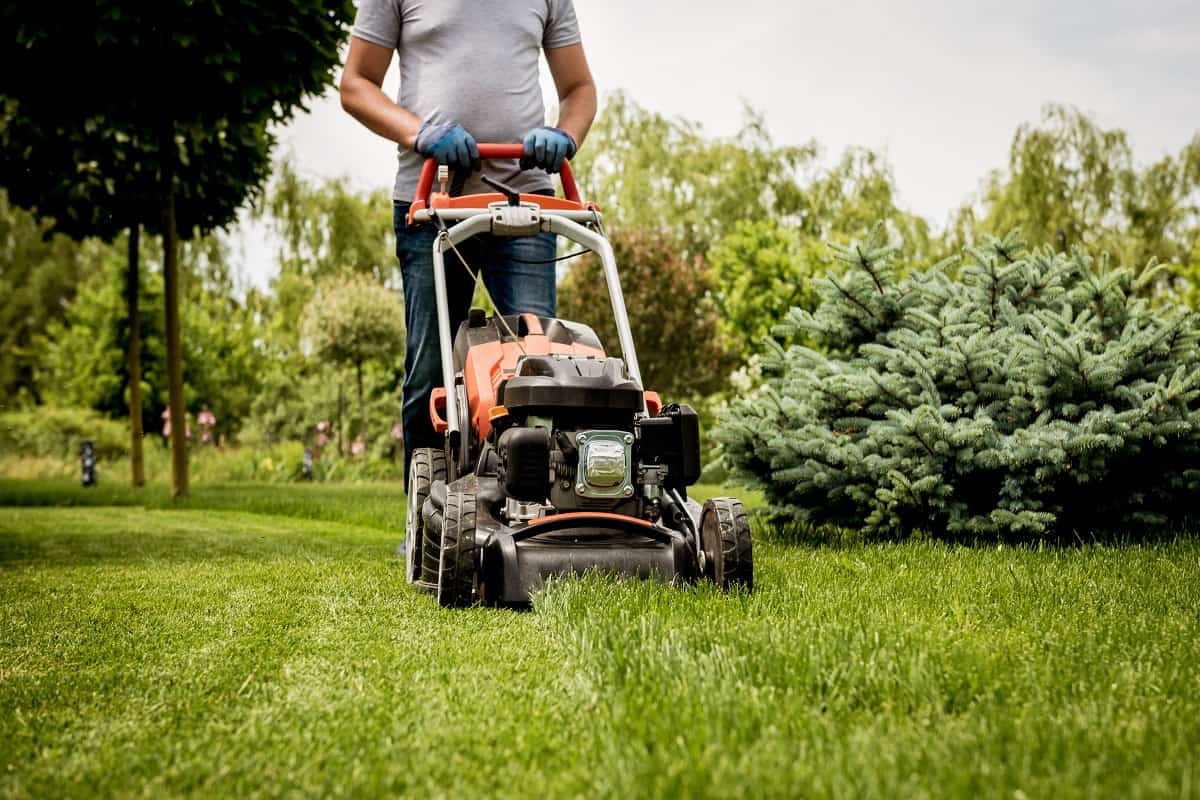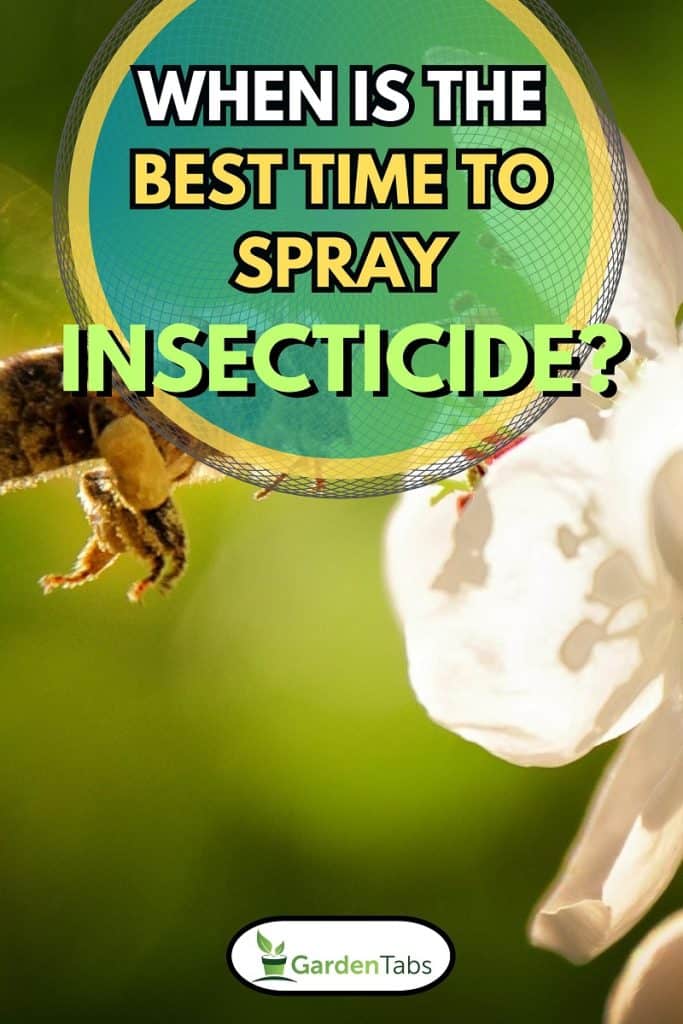You could be sipping tea on the patio, getting ready to work in the garden. That's when you spot something in the corner of your eye. Upon closer inspection, you realize there is an insect infestation. If you're wondering when the best time to spray insecticide is, we have researched this topic in depth to give you the answer and more.
The best time to spray insecticide is between late night and early morning. This is mainly due to three reasons:
- It prevents insecticide from evaporating prematurely
- Lower potential to harm beneficial insects
- Less heat stress for the person who will apply it
As straightforward as it sounds, there is more to spraying insecticide than freeing up your evenings or early mornings. Read on to find out the ins and outs of spraying insecticide at the right time for the best results.

Why Spray Insecticide Late At Night or Early In The Morning

When you discover that your prized tomatoes start disappearing overnight or that your green leafy vegetables begin turning into thin, see-through skeletons, then spraying insecticide might be your best bet.
But before you do anything, you should first be mindful that most of these substances can be highly toxic. After all, they are used to destroy pest populations—or at least to control or act as repellants.

If you already have your mind set on using insecticides, spray them at night or early in the morning to allow enough time for drying before temperatures reach 85-90°F. Let's dive into the details of why doing so contributes to delivering optimal efficacy.
Prevents Insecticide From Evaporating Prematurely
Exposure to sunlight can hinder the effectiveness of insecticides in various ways. Since most are mixed with water, they could evaporate when subjected to high temperatures. Also, radiation from the sun shortens the lifespan of insecticides.
Aside from not getting the most out of your application, insecticide also has the potential to drift away from the target site if it evaporates, which can be a threat to public health and the environment.
Drift can be hard to detect, but scientists have discovered that the chemicals can get carried away across continents—from Asia to the west coast in less than a week! The particles eventually fall back to the ground, unintentionally causing problems to our ecosystems.
For effective pest control while minimizing the risk of drift, spray at night or early morning.
Lower Potential To Harm Beneficial Insects
While insecticides help evict the unwelcome tenants of your garden, you wouldn't want to expose the beneficial insects to toxic chemicals. The good bugs are known to actively roam your garden during the daytime.

Spraying at night or very early in the morning helps minimize exposure to busy bees and beautiful butterflies.
Less Heat Stress
Considering you'll be wearing layers of personal protective equipment (PPE) to protect yourself against the hazards of handling insecticide, it will be more than just uncomfortable to stand under the scorching heat from the sun.
According to the World Health Organization, the potential for health-related adverse effects is increased when people are affected by heat stress.
People wearing PPE while exposed to heat are more likely to make mistakes in the field. In addition to that, sweat causes the skin to absorb more of the nasty stuff.
Just the same, spray at night or early morning to avoid heat stress.
When Should You Not Spray Insecticide?
Aside from avoiding the hotter parts of the day, specific weather conditions are considered less than ideal for spraying insecticide.
First, strong winds can cause insecticide to drift away from its intended target. That presents a health hazard, especially when the insecticide touches the skin or gets inhaled.
Second, rain can cause the insecticide to get washed away. It can harm the environment if it mixes with wastewater or makes its way into waterways like rivers and streams.
Third, don't spray when your plants show signs of moisture stress. Symptoms include permanently wilted, curled, or yellow leaves, stunted growth, and diminished crops.

Lastly, when spraying on food crops, check the insecticide label for the waiting period for harvest. You wouldn't want to consume lettuce with insecticide residue, of course.
Should I Mow Before Applying Insecticide?

The simple answer is yes, you should. Mowing involves cutting down flowering weeds, which eliminates the reason for pollinators like our friendly neighborhood bees to stick around.
It's a good idea to mow before you spray insecticide to maintain a healthy garden ecosystem.
What Is The Proper Way To Use Insecticide?
There are two main factors in judging the proper way to use insecticide—what type it is and its formulation.
Proper Way Based On Type
There are various types of insecticide available—each promising a specific way of controlling pests. Depending on where you aim to apply them, they are usually categorized into three major types: contact, systemic, and translaminar.
- Contact insecticides work by spraying them directly on the insects (or their usual pathways and hiding spots), hence the name.
- Systemic insecticides are combined with water and then applied to the ground for plants to absorb. The insecticide spreads steadily throughout the entire plant, primarily in an upward direction in line with the plant's growth.
- Translaminar insecticides are sprayed onto foliage and are absorbed by the plants just like systemic insecticides. However, they don't travel large distances throughout the plant as systemic insecticides do.
Even though an insecticide can display properties from all three major types, product labels will usually indicate which one it predominantly belongs to and, therefore, where to use it—directly toward the pests, on the ground, or onto foliage.
For example, neem oil and the products that derive from it are a popular choice for home gardeners these days.
While considered to be contact insecticides, they are known to have systemic and translaminar properties as well. Furthermore, they are far less toxic to humans and beneficial insects than synthetic insecticides—hence their popularity.
Since neem oil is a contact insecticide at its core, it is meant to be aimed directly at the enemy insects (a.k.a. your garden's destroyers). The pest-controlling action doesn't stop there, however. This is where the secondary properties come in.
Since neem oil also exhibits systemic and translaminar properties, it continues to guard your crops as they grow. Neem oil's guardian influence extends to the plant's brand-new shoots (systemic) and the existing bottom foliage that was sprayed (translaminar).
Check out this neem oil spray on Amazon.
Proper Way Based On Formulation
Insecticides are differentiated further based on formulation—which refers to the shape, form, and packaging.
Examples of formulations are baits of various forms, like pellets or gels; aerosol cans for misting; granules that are sprinkled on soil, then watered; or powders that are mixed with water, then transferred to empty spray bottles.
The proper way to use insecticide depends significantly on the formulation of your chosen product. With so many factors to think about, it can be nerve-wracking to follow through.
To help ease your mind, here is a list of best practices for guidance:
- Always wear personal protective equipment like long-sleeved shirts, pants, eye protection, and masks when working with insecticides.
- Experts generally recommend referring to the label for product-specific instructions.
- Mix the pesticide in well-ventilated areas, preferably outdoors. Only mix what you will use for the time being, as insecticides can break down quickly once prepared.
- If case of a spill, you can cover it with sawdust or cat litter. It's also a good idea to stock up on paper towels and garbage bags.
- Do not apply insecticide near waterways.
- Unless indicated otherwise, try to schedule your pest control efforts in May or June. Bee colonies spend the prior months recuperating from winter stress, so they will surely appreciate being left in peace during recovery mode.
- Avoid spraying directly on the flowers of blooming plants, as doing so would invite honey bees to their demise.
In Conclusion
Now that you know the best time to spray insecticide, you'll be better prepared when the time comes to get rid of the pests in your garden.
We shared the dos and don'ts of spraying insecticide so that you can get the best results at the lowest risk to personal and public health.
If you enjoyed this content, feel free to browse these related topics:





